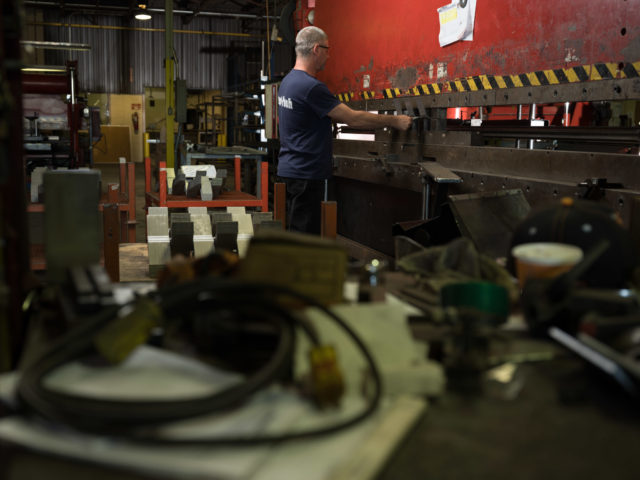There are a number of processes for fabricating stainless steel. It is relatively high strength and malleability, along with many favorable properties such as corrosive resistance, heat resistance, and durability, make stainless steel an exceptionally popular material for use in fabrication. Add to it its aesthetic appeal and hygienic applications, and it’s understandable why stainless steel is one of the leading materials for the fabrication of parts or end products by numerous industries. It’s used to manufacture food and medical grade equipment and devices, for architectural features and building, durable goods, as well as for parts and components used in aerospace and automotive applications, and much more.
Methods for Fabricating Stainless Steel
Stainless steel is numerically graded into four main categories—austenitic, ferritic, martensitic, and duplex. Depending on the grade and category of stainless steel, with today’s advancements in fabrication technology, stainless steel can be shaped into complex geometries to meet the most challenging design requirements. Here are several common processes for fabricating stainless steel:
Laser Cutting
Laser cutting is a thermal-based, non-contact subtractive method of fabrication that offers precision and accuracy. A combination of high pressure and highly focused energy allows a laser beam to slice through a narrow swath of material, with limited impact or stress and leaves a smooth-edged finish. With the integration with CNC (computer numerical control) programming, laser cutting can perform more intricate, creative, and complex geometrical designs once unimaginable. Laser cutting can be accomplished on stainless steel sheets or plates up to approximately 1 inch (25mm to 30mm) in thickness. The thermal nature of laser technology limits its effectiveness for any thicker material. The minimal material waste from the laser makes it a more cost-effective and efficient application than other cutting technologies.
Punching
Punch presses range from high-tech CNC-operated machines to hand-powered mechanical devices that are used to punch uniquely designed holes or in creating designs or patterns with various metal materials, among which is stainless steel. Punching is considered a subtractive fabrication process with two purposes. Punch presses house turrets that strike metal through with enough force to create uniquely designed holes in the material. The finished product can be either the blanks, i.e., the material removed from the metal sheet, or it can be the metal sheet itself with complex punched designs set into the material.
Forming
Forming is a multifaceted fabrication technique that permanently “deforms” the material and fashions it into a particular shape, length, part, or object. Forming processes involve reshaping a metal while it is still in its solid state. The plasticity of certain metals like stainless steel makes it possible to deform them from a solid piece into the desired form without losing the structural integrity of the metal. In effect, the material does not lose its mass, only its form.
Bending
Bending is a method of forming used by fabricators to manufacture metal parts and components to the desired shape. The process plastically deforms the workpiece to a desired geometric shape without changing its thickness or volume. Bending can be applied for either functional or cosmetic appearances. For stainless steel applications, tube bending is utilized for architectural and other applications, while press brake, bending machine, or ring-rolling are used for round bar, flat bar, sheet, and plate. Because of the work hardening, the bending process should be done rapidly with a degree of over-bending to counteract the spring-back of the bend.
Welding
Industrial metal fabrication shops utilize several types of welding methods and processes—Stick or Arc Welding, MIG Welding, and TIG Welding, as well as spot welding and stud welding. Though welding sheets or plates of stainless steel is a common fabrication technique, not all grades of stainless steel can be welded with efficiency. That will depend on the category and grade of stainless steel, combined with the regulation of heat. For example, some martensitic grades can be welded, but the material must be pre-heated and post-heated or, otherwise, it can be prone to cracking. On the other hand, duplex grades of stainless steel are considered welding efficient, as are austenitic grades of thinner stainless steel sheets. Some grades of ferritic stainless steel can be used in welding for specific projects, such as 409.
To learn more about fabricating stainless steel and the processes that can be involved, contact us at Quest-Tech Precision Inc. today!



